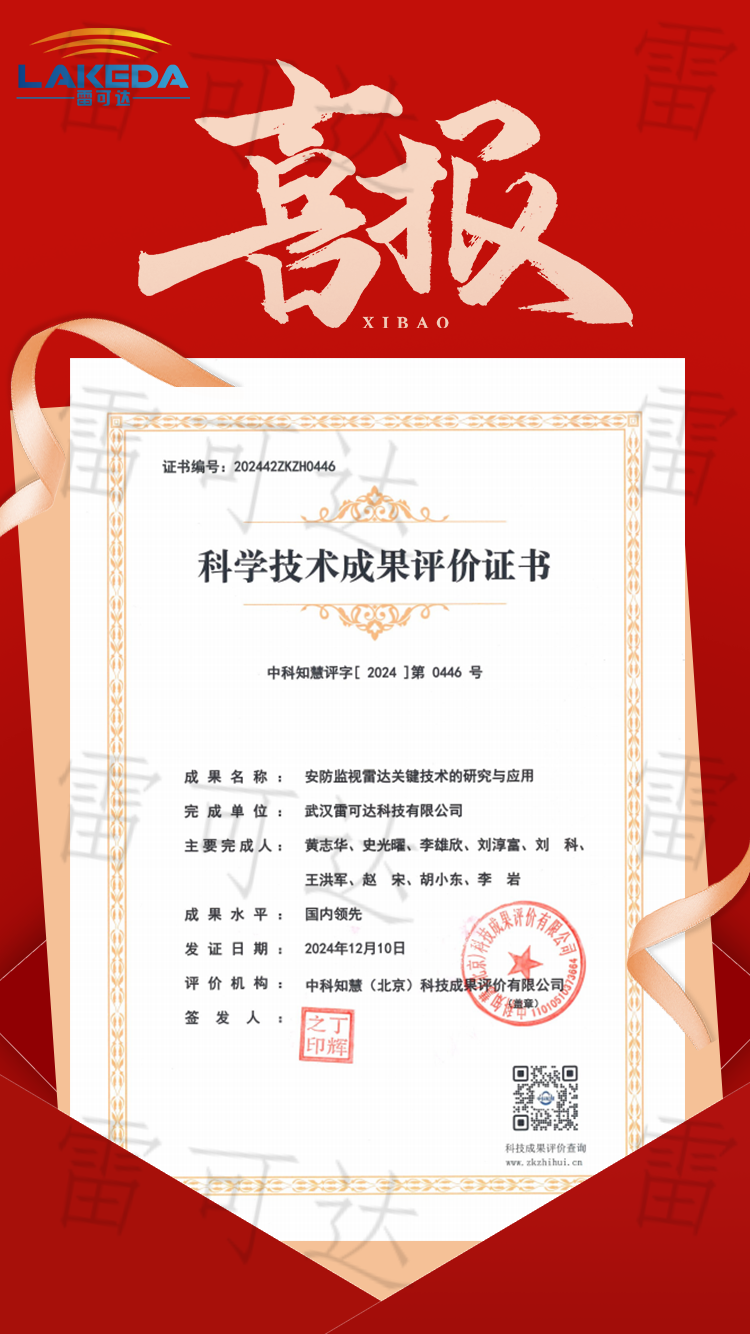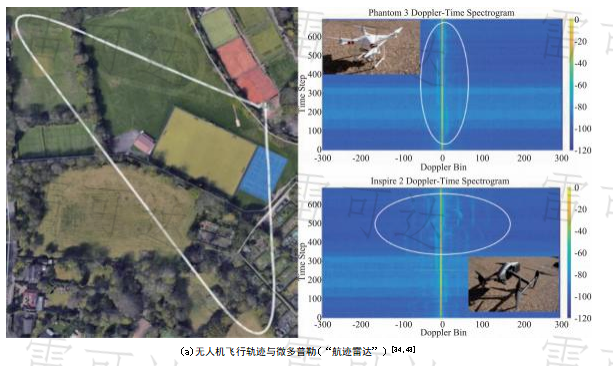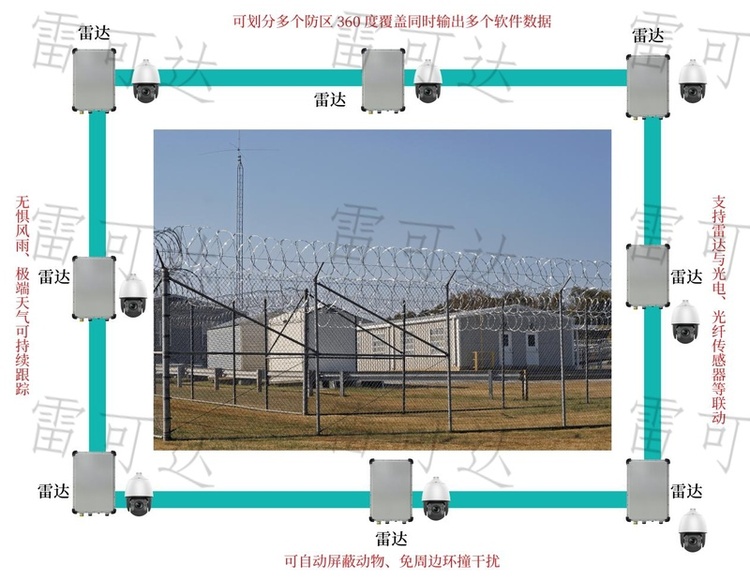Knowledge

Lakeda Awarded Scientific and Technological Achievement Evaluation Certificate, Accelerating a New Journey in Technological Innovation
Lakeda has received the Scientific and Technological Achievement Evaluation Certificate issued by a national authoritative institution, marking the authoritative recognition of its independently developed achievements. This technology demonstrates industry-leading capabilities and broad application prospects, and it will continue to drive technological innovation and industrial transformation in the future.
Read more
Complete Analysis of Anti-Drone Radar Recognition Technology: Chapter 4 Finale | Key Technologies Revealed
This article explores the technical bottlenecks in target recognition for counter-drone radar systems, with a focus on analyzing the working principles, advantages, and challenges of micro-Doppler radar. It proposes enhancing recognition performance through situational awareness and system optimization, aiming to achieve a leap from 3D to 4D perception.
Read more
Analysis of Automatic Target Recognition Technology for Anti-Drone Radar: Principles and Practical Guide
This article focuses on the Automatic Target Recognition (ATR) technology in counter-UAV radar systems, providing a systematic analysis of its current applications, core challenges, and optimization directions. By enhancing detection range and recognition accuracy, ATR technology is expected to drive the evolution of radar systems toward 4D perception, improving the capability to counter “low, slow, and small” drones.
Read more
Compact Security Radar and Optical Fiber Fence System: In-depth Analysis of Technical Advantages and Cost-effectiveness
This article provides a comprehensive comparison of the technical features, cost-effectiveness, and early warning capabilities between fiber optic fence security systems and compact radar. It analyzes the strengths and weaknesses of both in perimeter security, assisting users in selecting the optimal solution based on their actual needs and budget.
Read more
Lakeda: A High-Tech Enterprise Dedicated to Independent R&D and Manufacturing of Military and Civilian Radar Systems
Wuhan Lakeda Technology Co., Ltd. is a high-tech enterprise specializing in the research, development, and manufacturing of military and civilian radar systems. With core businesses in anti-drone detection, ground security, and coastal defense, the company is dedicated to safeguarding national security and promoting the standardized development of the industry through advanced technology.
Read more
Analysis of Core Radar Technical Indicators: A Guide to Key Parameters and Performance Evaluation
This paper systematically analyzes seven key performance indicators of radar systems, covering core aspects such as antenna and feeder optimization, signal design, transceiver performance, and data processing. It provides a practical optimization guide to enhance radar detection accuracy, anti-jamming capabilities, and target detection performance.
Read more
The Importance and Application Value of Drone Detection Radar Technology: Key Applications and Future Development
This article provides a comprehensive analysis of the technical advantages and application scenarios of drone detection radar, covering core features such as high-precision detection, rapid response, and all-weather operation. It also highlights its significant value in public safety, military defense, and civil security, while offering insights into the trends of intelligent development.
Read more
Radar Anti-Jamming Technology: A Comprehensive Guide to Principles, Methods, and Practical Applications
This article provides an in-depth analysis of radar electronic reconnaissance and counter-reconnaissance technologies, covering the principles of electronic jamming and countermeasures. It includes core anti-jamming techniques such as antenna design, frequency adaptation, and signal processing, offering essential theoretical support for modern electronic warfare.
Read more
Radar Anti-Low-Altitude Intrusion Technology: A Comprehensive Analysis of Principles, Applications, and System Advantages
Lakeda’s anti-low-altitude intrusion radar technology utilizes the Doppler effect and pulse compression techniques to accurately detect low-altitude flying targets. It is widely applied in military defense, civil aviation, and the protection of critical facilities, offering high precision, real-time response, and strong anti-interference capabilities, effectively enhancing security levels.
Read more
Drone Detection Radar Technology: Principle Analysis and Industry Application Guide
This article systematically analyzes the technical principles, countermeasures, and development trends of drone detection radar. Drone detection radar utilizes electromagnetic waves to achieve high-precision target detection, with countermeasures including information deception, countermeasure systems, signal jamming, and stealth technology. The technology is advancing toward higher dimensions and broader frequency spectra, serving as a core component of modern military electronic warfare.
Read more